When your phone rings, do you shudder because you think it could be a coworker messaging you during off hours? Or, do you struggle to remember deadlines no matter how many sticky notes you put around your home office?
If that sounds like an apt description of part of your workday, you’re in the same boat as many remote workers.
Without the right tools for remote work, daily challenges take a toll on productivity and engagement.
This situation puts both businesses and remote workers in a tough spot.
I’ve spent most of my professional career working from home, so I’m always on the lookout for tools that can help keep remote teams on track.
Thus, I’ve compiled a list of the top 20 remote work tools that will allow you to boost your productivity.
Let’s dive in!

Table of Contents
Pumble — Best for unlimited communication
Pumble is a team communication app that helps remote workers achieve smooth asynchronous communication. Thanks to its user-friendly nature, Pumble facilitates collaboration between remote workers and their in-office colleagues.
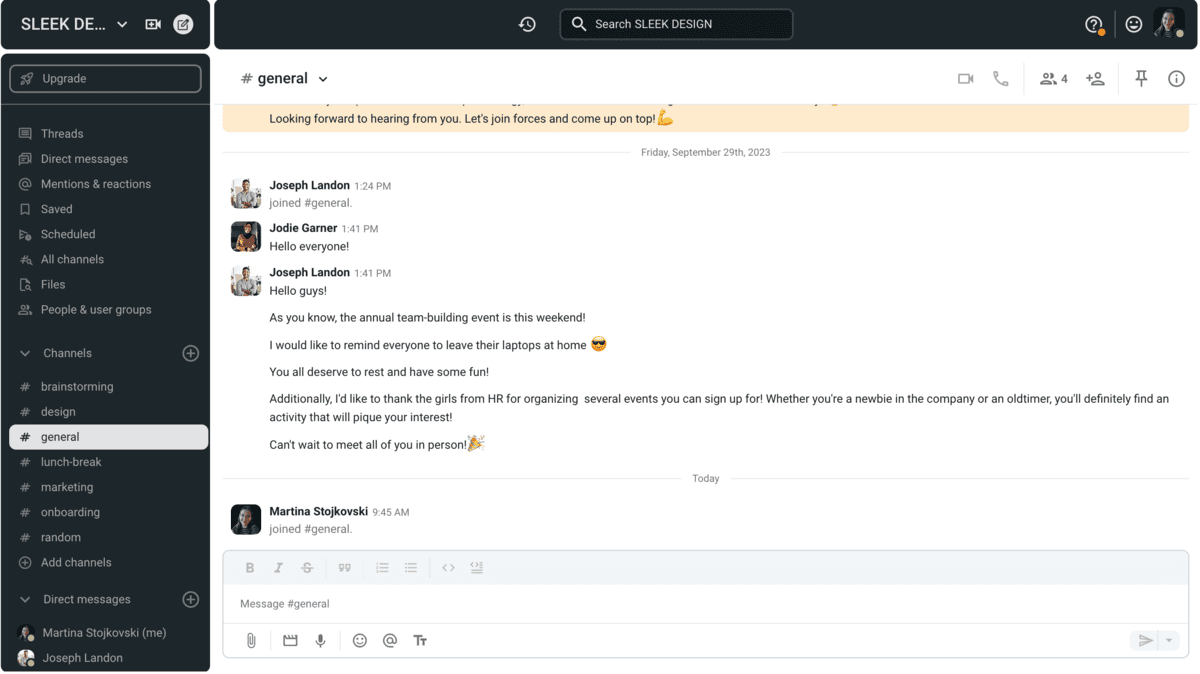
Main pro: With the unlimited chat history, you never have to worry about losing your correspondence, while teammates can use channels to create a designated place for a specific task or project.
Main con: Seasoned remote workers might wish they could format words into hyperlinks when messaging — which is in the works, as stated in the Pumble Roadmap.
What’s new: Besides conducting audio and video calls within the app, users can now also record their meetings and invite external guests to join via meeting links.
Available for: Web, Mac, Windows, Linux, Android, and iOS
Gmail — Best for email correspondence
A secure cloud-based email service, Gmail is a popular solution for remote and hybrid businesses that value effective communication.
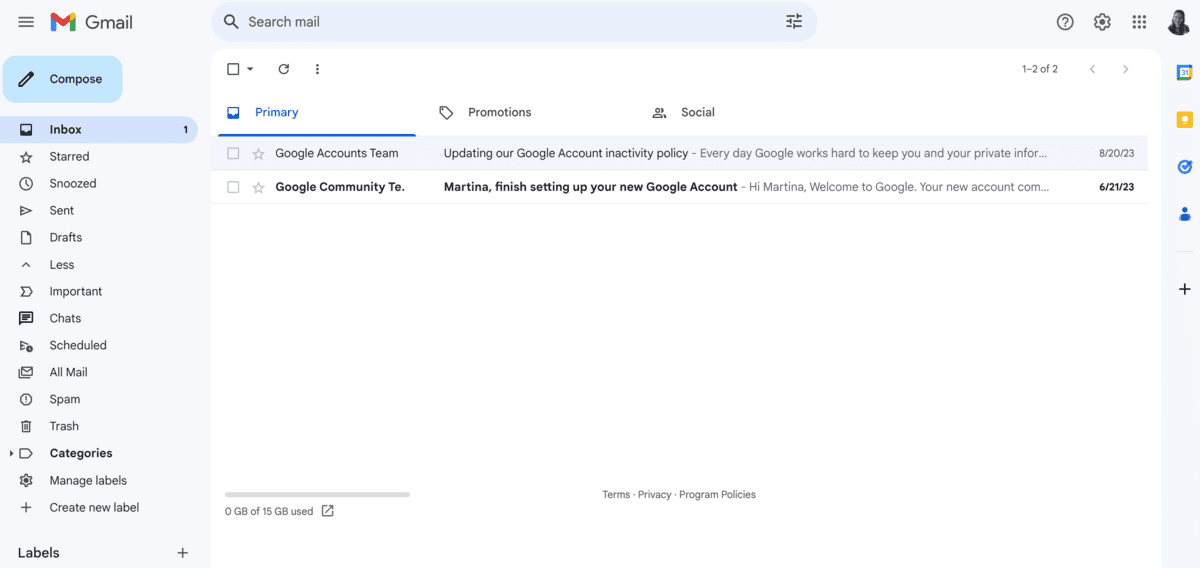
Main pro: Alongside availability across platforms and affordable pricing, Gmail boasts an intuitive design that allows for hassle-free correspondence.
Main con: As email isn’t the best choice for remote communication, Gmail may not tick all your boxes. Still, it can be a viable solution for remote workers already immersed in the Google ecosystem.
What’s new: Gmail’s new integrated view lets users organize Chat, Mail, Meet, and Spaces in one place. Additionally, you can show or hide the side panel and receive bubble notifications for new Space and Chat messages.
Available for: Web, Mac, Windows, Android, and iOS
Plaky — Best for team collaboration
A free project management tool, Plaky, helps companies plan and execute various projects and tasks.
The app is a perfect fit for small and mid-size businesses looking to streamline their remote workflows.
If you’re unsure where to start, you can head to Plaky’s Template center and use a template that aligns with your specific needs.
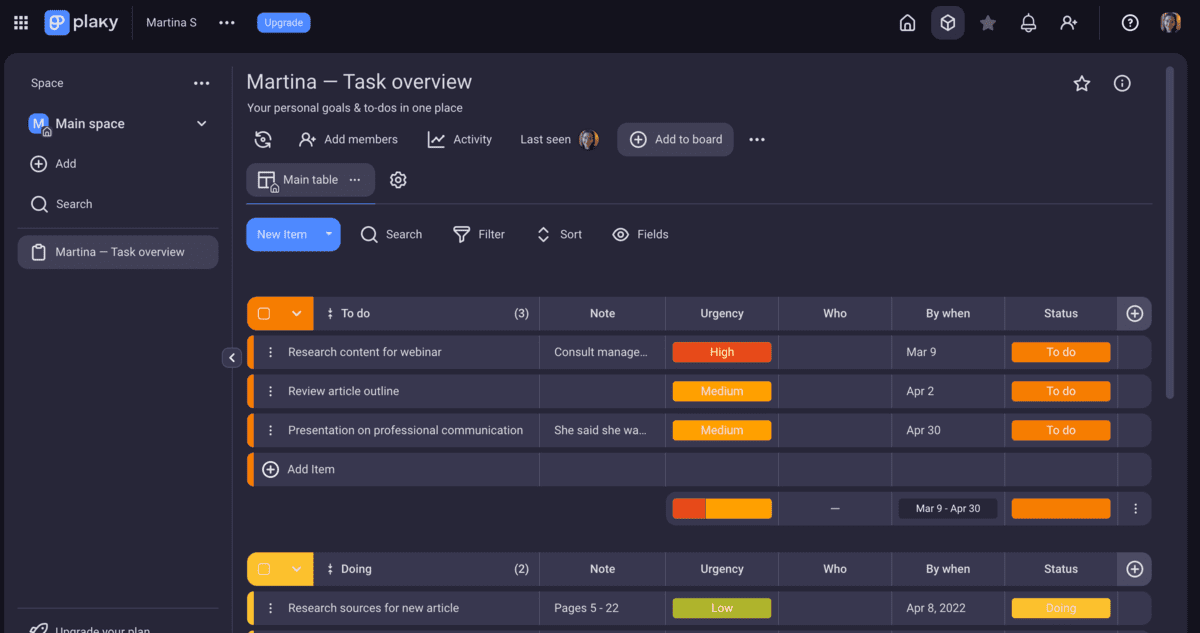
Main pro: Plaky has a clean design that lets you stay on top of work by:
- Defining deadlines,
- Describing the specifics of a task, and
- Assigning the task to the appropriate employee.
Main con: Using this task manager app may feel more natural from a web browser than a phone, as you’ll get a complete overview without excessive scrolling. However, this is the case for most project management apps on the market.
What’s new: Recently launched Plaky features include Gantt view, Kanban summaries, and timeline fields.
Available for: Web, iOS, and Android
Skype — Best for simple video calls
Skype — a popular Microsoft product — is best known for letting users host group and 1-on-1 meetings.
Even if you’re not the most tech-savvy member of your remote team, you shouldn’t have any trouble using Skype.
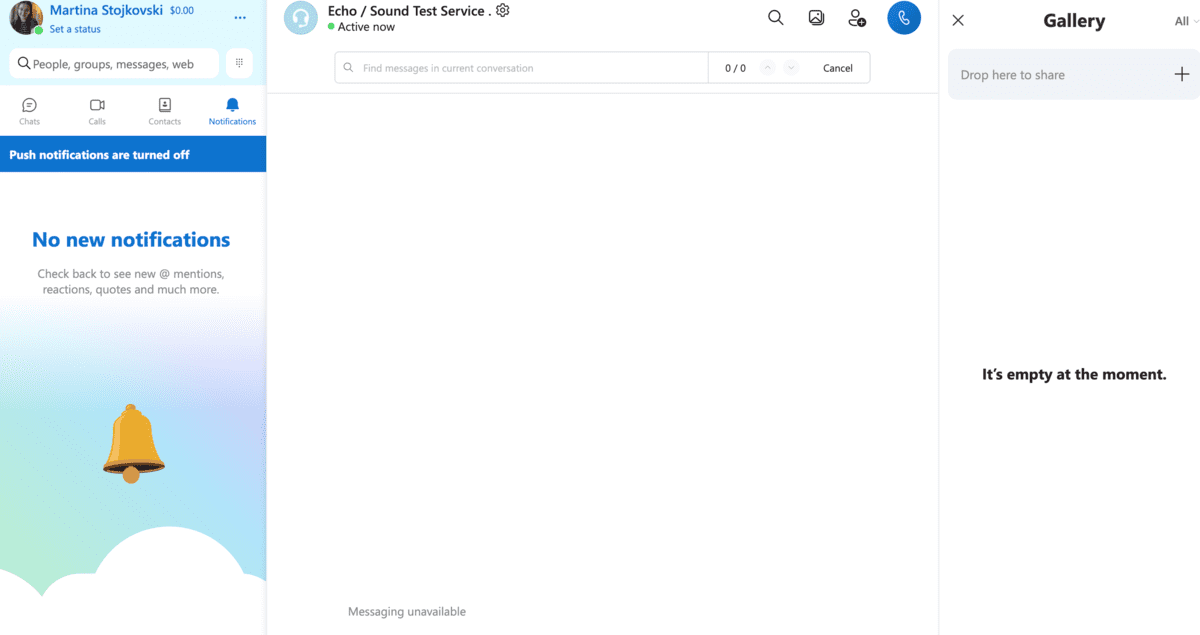
Main pro: In moments when a video meeting isn’t necessary, you can easily reach coworkers via phone call or Skype’s instant messaging.
Main con: Although many remote and distributed teams take advantage of Skype’s capabilities, the UI makes the app feel outdated.
What’s new: Skype has attempted to improve its chat performance by introducing a redesigned menu and new emojis. Also, the file-sharing feature allows remote workers to easily send and receive documents through the chat.
Available for: Web, Windows, Mac, Linux, Android, and iOS
💡 Pumble Pro Tip
Microsoft Teams and Skype have been video conferencing giants for years, but how do the two remote work tools compare? And, are there any free Skype alternatives you could try? To learn more, check out these posts:
Bitwarden — Best for secure password protection
Bitwarden, a trusty open-source password manager, allows remote workers to:
- Store,
- Protect, and
- Manage their passwords.
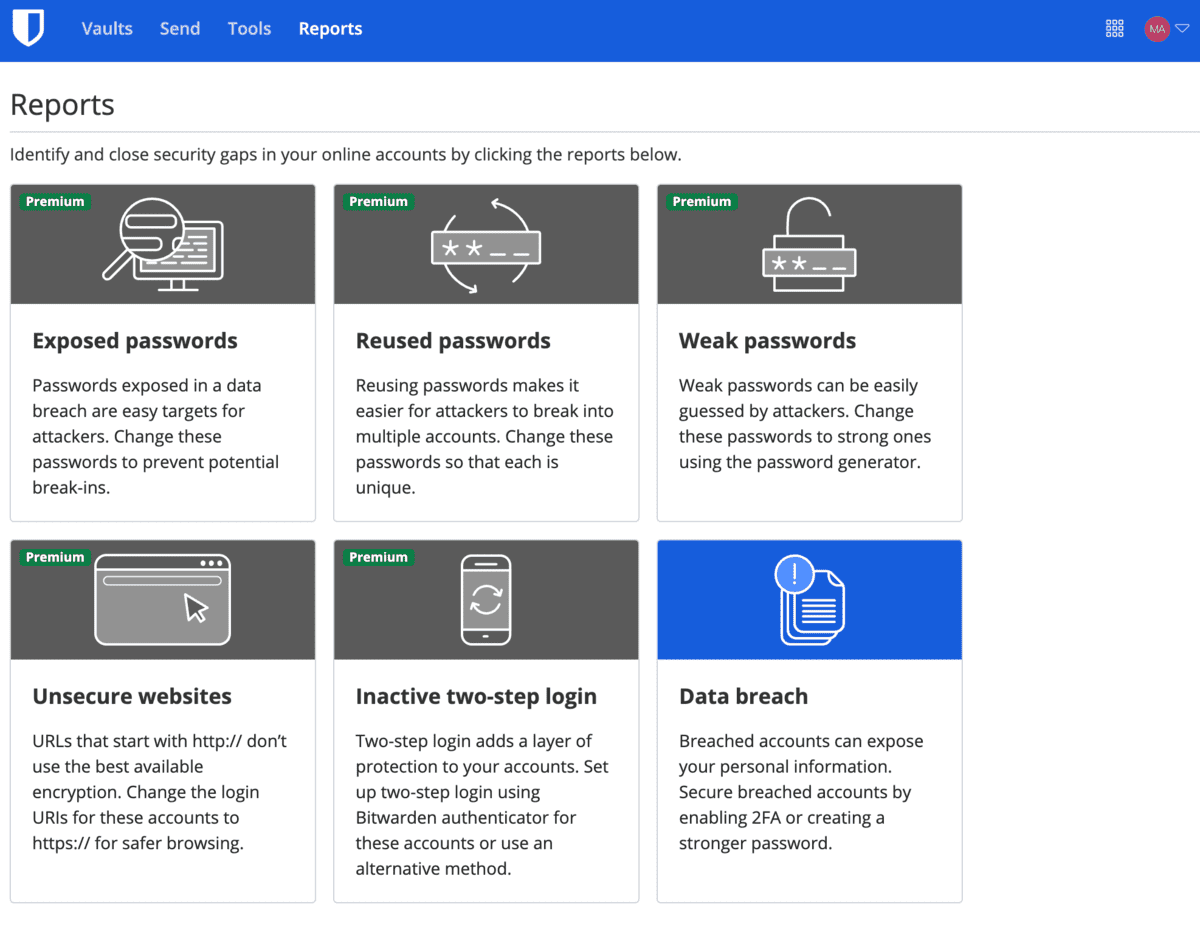
Main pro: Users praise the tool’s free plan, which supports a maximum of 2 accounts. Additionally, the free tier provides you with multi-factor authentication using the mobile app or email and scanning for data breaches. Thus, the app appeals most to remote workers who want top-notch protection without breaking the bank.
Main con: Bitwarden lacks more competitive features, such as dark web monitoring, and there’s no live support should you run into an issue.
What’s new: Bitwarden recently rolled out its passkey management feature, which lets users log into websites in a safe and reliable manner without using a password.
Available for: Web, Windows, Mac, Linux, Android, and iOS
Nextiva — Best for reliable VoIP services
Nextiva is a reliable cloud-based VoIP solution that boasts stable service with almost 100% uptime and 24/7 customer support.
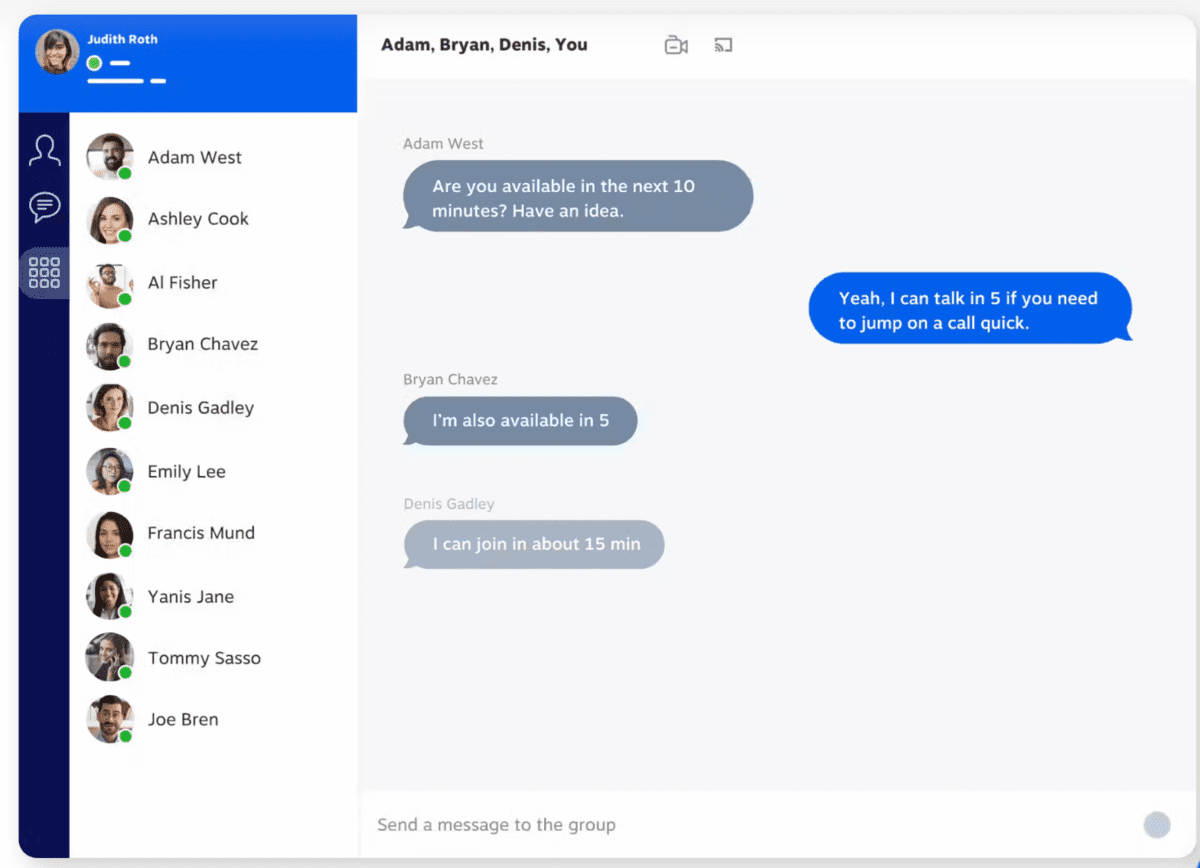
Main pro: In addition to providing unlimited calls across Canada and the US, Nextiva also gives users access to team collaboration features such as group chats and instant messaging.
Main con: Although the service is fairly comprehensive, it mainly caters to larger businesses, so it may not be as suitable for small organizations and contractors working from home.
What’s new: The new Mini View feature in the NextivaONE desktop app lets users manage contacts, voicemails, and more from one place.
Available for: Web, Windows, Mac, Android, and iOS
Calendly — Best for quick and easy scheduling
A free online appointment scheduling app, Calendly allows in-office and remote workers to effortlessly:
- Schedule,
- Conduct, and
- Follow up on meetings.
At the core of Calendly’s user base are employees working from home and people looking for an email alternative.

Main pro: Remote-first companies can take advantage of Calendly’s automation and customization options to ensure that both employees and customers are satisfied.
Main con: The app took a while when syncing my Outlook calendar and Calendly schedule. If you’ve got the patience to wait out this hiccup, Calendly just might be the perfect remote work tool for you.
What’s new: Calendly’s recent updates focus on allowing users to set up meetings in less time so that they can enter conferences and events better prepared.
Available for: Web, Windows, Mac, iOS, and Android
Clockify — Best for hassle-free time tracking
With Clockify, remote workers never have to wonder how much time they’ve actually spent working on a project.
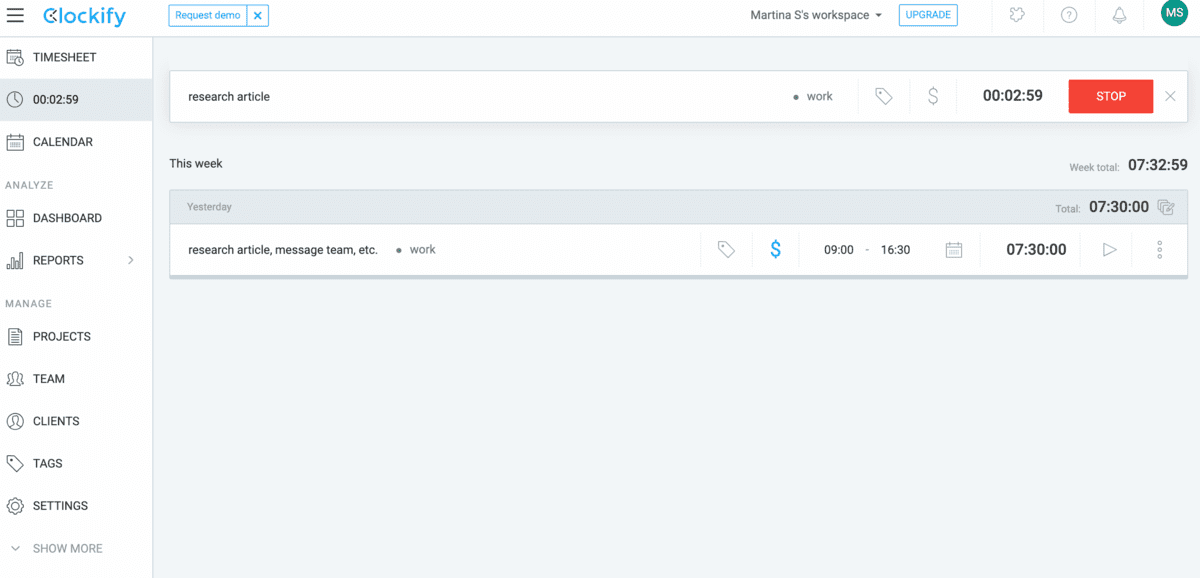
Main pro: The Calendar view can help you stay on top of your workload by displaying your activities as time blocks. You can tweak and add details and see your workdays as time blocks ranging from 5 to 60 minutes. This visualization makes it easier to see when and how you’re most productive and learn how to manage your time more efficiently.
Main con: If you make a mistake in your time entry, you’ll have to correct it manually. Fortunately, it only takes a minute to do so.
What’s new: The time tracker now offers improved account security, so every login calls for email authentication.
Available for: Web, Windows, Mac, Linux, Android, and iOS
Bit.ai — Best for document collaboration
Bit.ai is a remote work tool that promotes engagement and collaboration through interactive document creation.
You can work together on a document with a colleague without worrying about location or time zone restrictions and end up with a media-rich product.
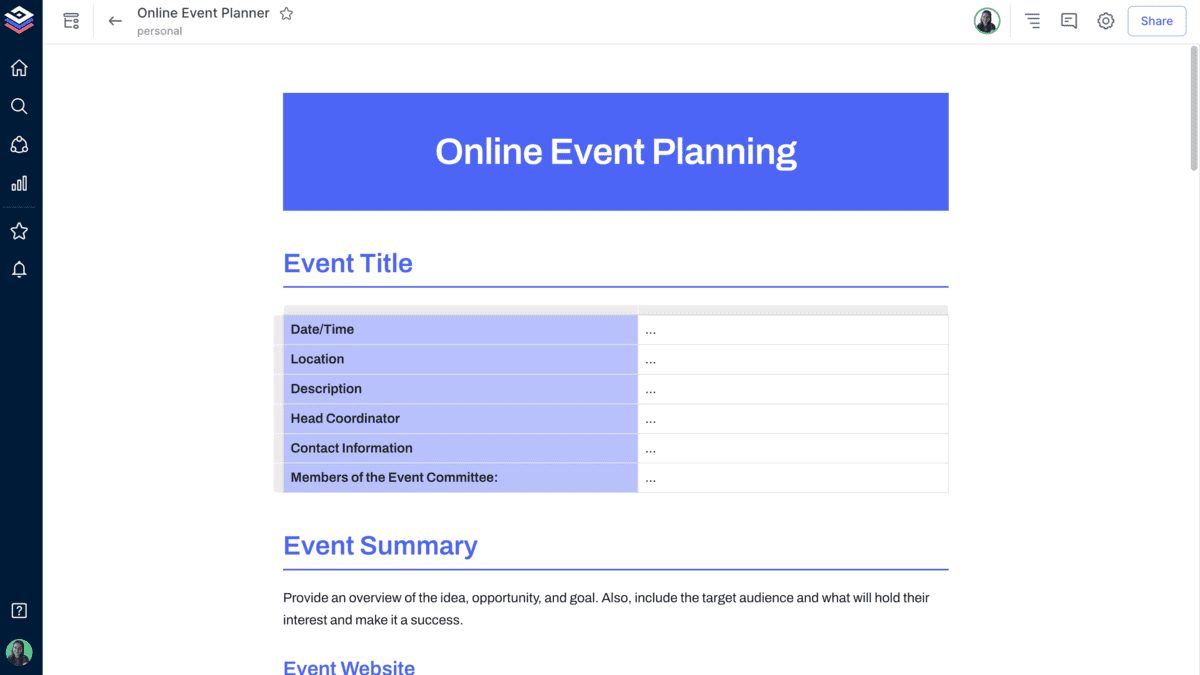
Main pro: Whether you’re typing meeting minutes or organizing a brainstorming session, the platform lets you access cloud-based files to make your document even more visually appealing.
Main con: I found the formatting options somewhat limited, which is an issue for those who prefer more control over their documents.
What’s new: The platform’s latest features include personal, team, and company workspaces — an excellent addition for freelancers who often have to juggle several clients simultaneously.
Available for: Web, Windows, Mac, Linux, Android, and iOS
Proton VPN — Best for safe internet browsing
Proton VPN is a free and secure VPN solution allowing remote workers to surf the Internet without fear of privacy breaches.
This service might be the way to go if you want to:
- Optimize your remote browsing experience,
- Get around location-specific restrictions, and
- Browse the web in a secure environment.

Main pro: The platform doesn’t log user activity or share your data with third parties, which is crucial for protecting your personal and professional details.
Main con: Remote workers might be disappointed to learn that Proton VPN only offers email support. For more complex issues, that could mean you’ll have to wait a bit longer for a resolution.
What’s new: The new Linux VPN app includes features that enhance P2P performance and hide users’ IP addresses should the VPN connection break.
Available for: Windows, Mac, Linux, Chromebook, Android, Android TV, and iOS
Dropbox — Best for cloud storage
This cloud-based document management software caters to:
- Self-employed individuals,
- Remote companies, and
- Large corporations.
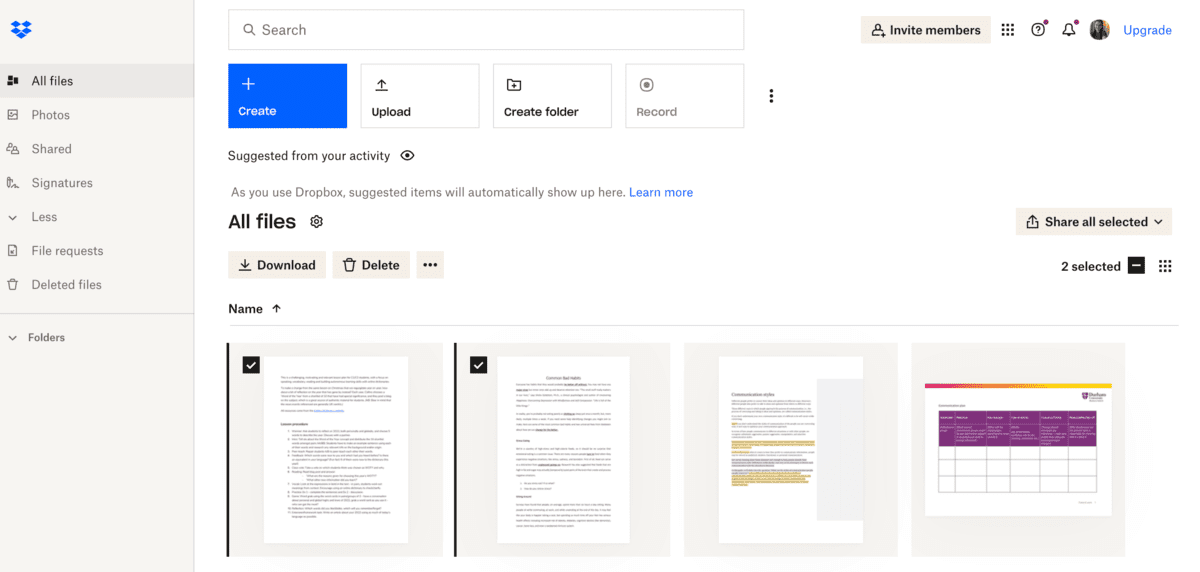
Main pro: In addition to cloud storage and file-sharing features, Dropbox provides users with integrations for Google Workspace and Office 365. So, if you want to move from these platforms to Dropbox, you’ll be able to do so without major issues.
Main con: Although Dropbox excels at file sharing and syncing — which are essential for business communication — it doesn’t use zero-knowledge encryption, the standard for many similar services.
Still, you’ll have two-factor authentication to prevent unauthorized users from accessing your account.
What’s new: The platform’s new “Manage hard drive space” section lets you know how much space non-Dropbox and Dropbox files take up on your hard drive. You can then quickly determine which files to move to the cloud and free up space on your device.
Available for: Web, Windows, Linux, Android, and iOS
Canva — Best for content creation
Whether you’re a seasoned graphic designer or just starting your artistic journey, this remote work tool can help you create visually appealing content.
A graphic design app at its core, Canva has become the go-to hub for all brand-related content for many remote companies.
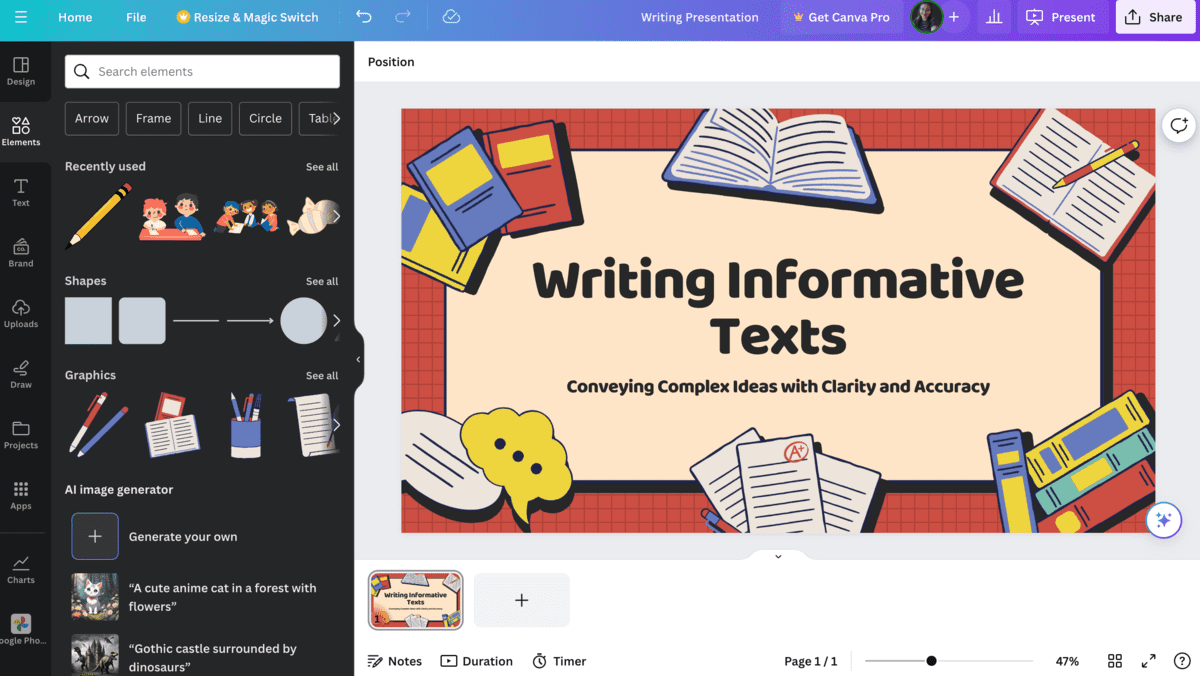
Main pro: The template-packed library is extensive, allowing employees to quickly generate a range of material, including:
- Presentations,
- Video edits, and
- Social media content.
Main con: You’ll have to get a Pro subscription to unlock 1 TB of cloud storage and some of the more advanced AI tools. For freelancers working on a budget, that may not be the most viable option.
What’s new: Available for Canva Docs, the AI translator tool removes communication barriers by translating designs into over 100 languages within minutes.
Available for: Web, Windows, Mac, Android, and iOS
Miro — Best for whiteboarding
Next up on our “best tools for remote work” list is Miro, a well-known visual collaboration platform.
Instead of gathering around a whiteboard in the office, your remote team can use Miro to come up with winning brainstorming ideas, all while working from home.
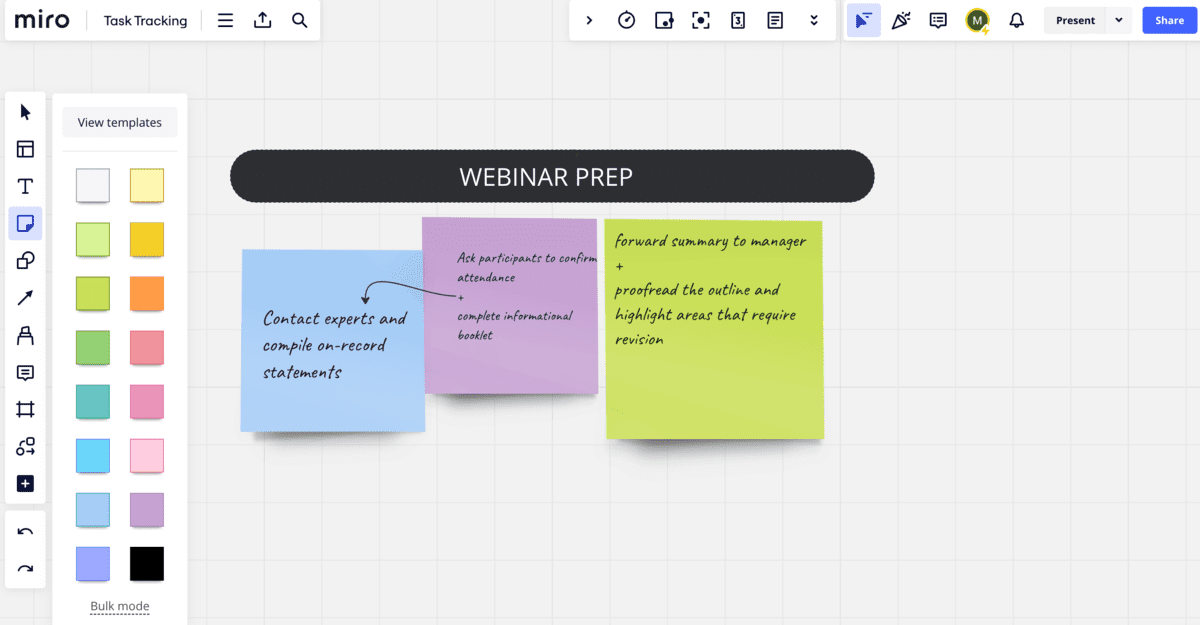
Main pro: With Walkthrough, you can capture a visual walkthrough of your board and guide your coworkers in how they can contribute. This feature is handy for teams who prefer asynchronous communication and collaboration.
Main con: The offline functionalities are limited, so potential users should be aware that they may not always be able to edit their work in case of an emergency.
What’s new: With the Brand Centre, you can keep fonts and assets aligned so that all visual elements communicate your brand identity.
Available for: Web, Windows, Mac, Android, and iOS
Salesmate — Best for customer relationship management
This cloud-based software solution aims to help remote teams automate marketing processes and improve CRM procedures.
It allows users to:
- Keep track of prospects and leads,
- Automate routine tasks, and
- Send personalized texts and emails.

Main pro: When a prospective lead doesn’t respond to an email, Salesmate automatically generates a plan of action, so you can immediately focus on the next steps.
Main con: Remote sales teams can leverage the sales automation and management features, but be aware that the platform sometimes lags and can take a while to recover.
What’s new: Users can now create multi-module reports with up to 5 modules to analyze multiple aspects of a campaign or business.
Available for: Android, iOS, Web, and Windows
Pitch — Best for interactive presentation-making
Pitch is a lightweight and intuitive tool with visually stunning presentation assets that lets you measure engagement to see which slides pull most of the viewership.

Main pro: Each presentation will clearly articulate your brand image with custom fonts and brand colors, and you can also create additional materials, such as:
- Market research documentation,
- Pitch decks, and
- Sales decks.
Main con: One downside I noticed is that Pitch lacks functionalities you’d expect to see in a presentation-making tool. For example, it’s currently not possible to include hyperlinks on background images or other non-textual elements like shapes.
What’s new: With the new slide transitions from Pitch, users can make their presentations and decks even more dynamic.
Available for: Web, Windows, Mac, Android, and iOS
Evernote — Best for organizing notes and documents
A cloud-based note-taking service ideal for keeping track of notes and virtual meetings, Evernote has been a popular remote work tool for years.
If you’re scurrying to find a document or file, you can use the app’s conventional search option or the AI search feature to save time.
The app keeps your information in notebooks and doesn’t limit you to only text. You can upload attachments such as spreadsheets and PDFs, keeping all related data in one organized notebook.
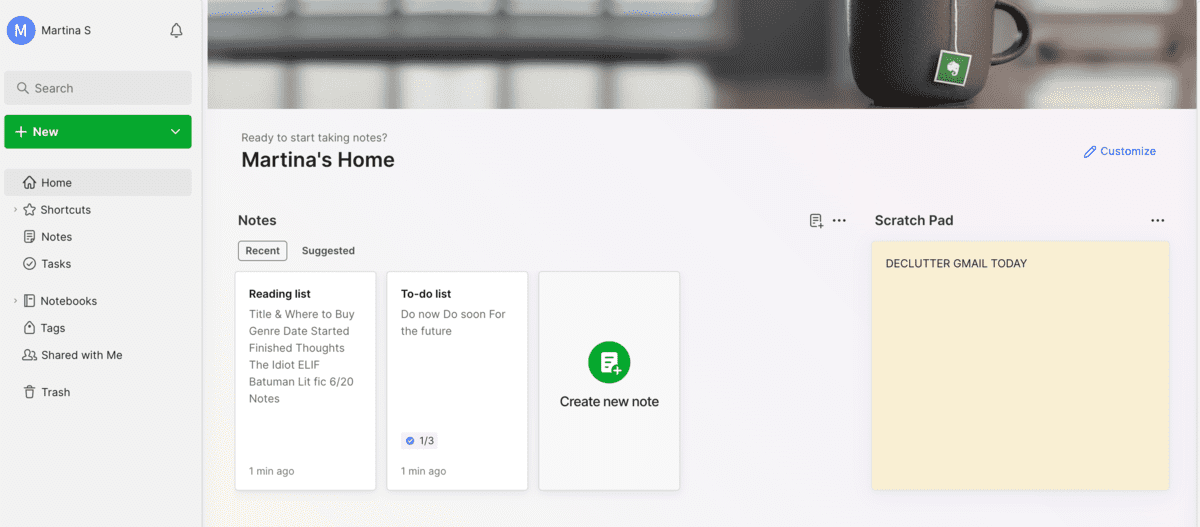
Main pro: From the customizable homepage, you get a quick view of the most recent notes and other handy features like:
- A scratch pad,
- Pinned notes, and
- A calendar.
Main con: Despite its efficiency, Evernote is one of the most expensive note-takers on the market. Given that the free version comes with limited features, remote workers looking for a budget-friendly option might turn to a different solution.
What’s new: Evernote recently debuted its streamlined UI for a smoother in-app experience and improved readability.
Available for: Web, Windows, Mac, Android, and iOS
SignNow — Best for electronic document signing
Thanks to cost-efficient remote work tools like SignNow, we can digitally sign documents without ever having to step foot into an office.
Instead of emailing back and forth with coworkers and clients, you can get the work done in a fraction of the time using the automated e-signature process.
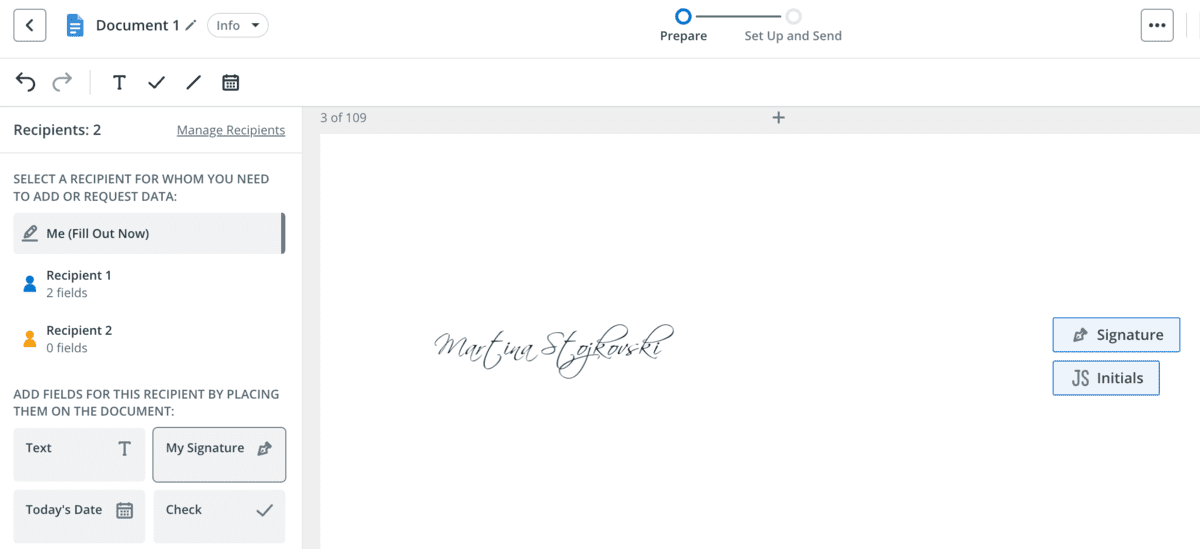
Main pro: You can save your most used documents as reusable templates and insert customizable fields for more convenience. And, remote businesses can add their logos onto contracts to spread brand awareness as they share the documents.
Main con: Once you create a template, editing its contents can get complicated, which is an issue you might want to avoid when using an e-document signer.
What’s new: With the newly released auto-populating fields, the platform suggests prompts based on previously entered data, helping you quickly complete the form.
Available for: Web, Windows, Linux, Android, and iOS
Blueboard — Best for rewarding remote workers for their accomplishments
Bluebird is on a mission to help hybrid and remote organizations give employees the recognition they deserve.
Many companies struggle to create and maintain a great employee experience for remote workers.

Main pro: With Blueboard, businesses can reward exceptional performance with memorable gifts such as:
- Skydiving,
- A family zipline adventure,
- Blacksmithing classes, and
- Cocktail-making workshops.
Main con: Although Blueboard promises unforgettable experiences, getting used to the platform’s layout takes some time, as does figuring out what experiences and events are available on specific dates. So, if you’re thinking of using it to reward coworkers and employees, it may be a good idea to plan ahead.
What’s new: Through Blueboard’s Social enhancement, employees can create and upload videos of gifted events and experiences, sharing them with their coworkers.
Available for: Web
💡 Pumble Pro Tip
Besides giving out rewards for milestones and accomplishments, organizations can also implement simple practices to ensure remote workers are satisfied with their experience. For more information, including expert advice, head to this blog post:
Grammarly — Best for fixing punctuation and spelling errors
Business communication should be free from mistakes, and with Grammarly, an easy-to-use writing assistant, you won’t have to second-guess your communication skills.

Main pro: Besides catching misspellings and misplaced commas, you can finetune the app’s writing preferences to generate suggestions that will elevate your personal writing style.
Main con: The suggestions Grammarly generates aim for simplicity, which is a good approach for corporate communication. But, as a remote worker whose job entails more writing, I found some of the suggestions overly simplistic.
What’s new: One of Grammarly’s newest features includes an AI Writer designed to speed up the process of writing emails, reports, and articles.
Available for: Web, Mac, Windows, Android, and iOS
Zoho Invoice — Best for managing invoices
Zoho Invoice rounds off our roster of remote work tools. This cloud-based solution is designed to help businesses manage their invoices by simplifying a traditionally complex and lengthy process.
It is available in 17 languages, which means it’s an excellent solution for remote organizations with multicultural teams.
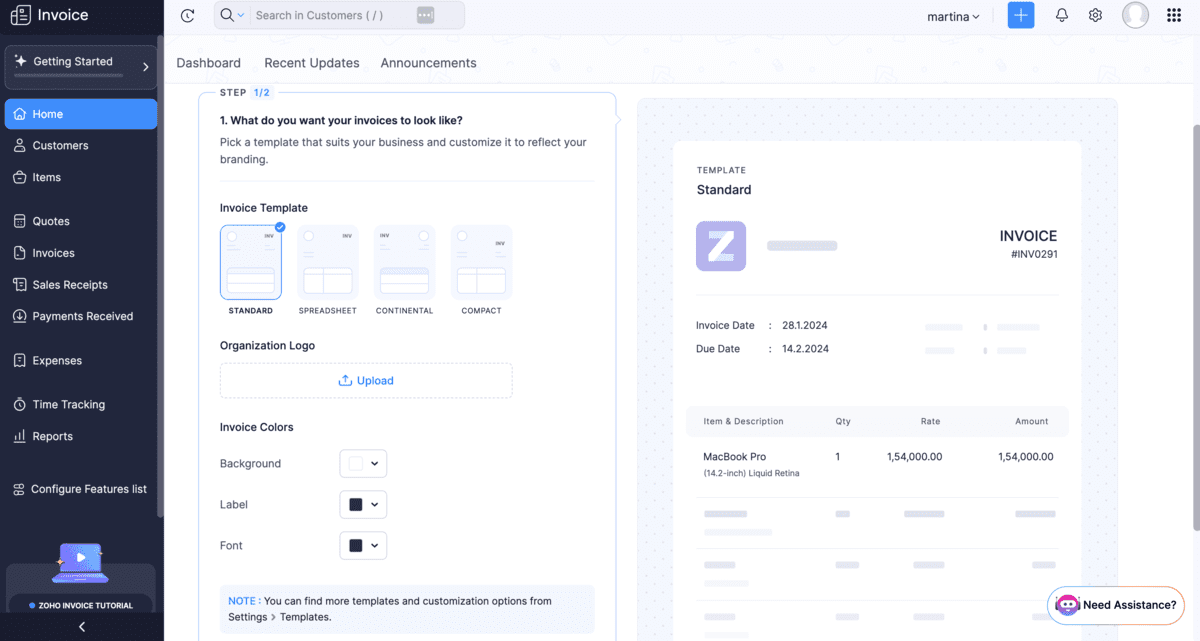
Main pro: The best thing is that the platform is free and allows companies to integrate with many third-party apps, including Microsoft Office 365 and Google Workspace.
Main con: Although Zoho Invoice is an impressive remote work tool, using it isn’t always smooth sailing, particularly when changing selected currency for clients. You’ll have to go over the currency setup from scratch, which can be time-consuming and slightly taxing.
What’s new: As part of its recent product updates, the tool has added Apple Pay as a payment option to its Stripe integration for countries and regions that support it.
Available for: Web, Windows, Mac, Linux, Android, and iOS
Choose the right remote work tools for long-term success
Remote work comes with many variables, and without the proper tools, rising to the occasion can be daunting. Fortunately, when you find apps that cultivate healthy communication and productivity, facing challenges as a team is much easier.
We’ve laid out our list of 20 of the best remote work tools on the market, and it’s up to you to see which ones are a suitable match for your team and business. Take the time to try several solutions and see how they could benefit you in the long run.
Wondering how Pumble can bolster your organization’s collaboration and communication efforts? Sign up for free today and see how it can aid your team!




